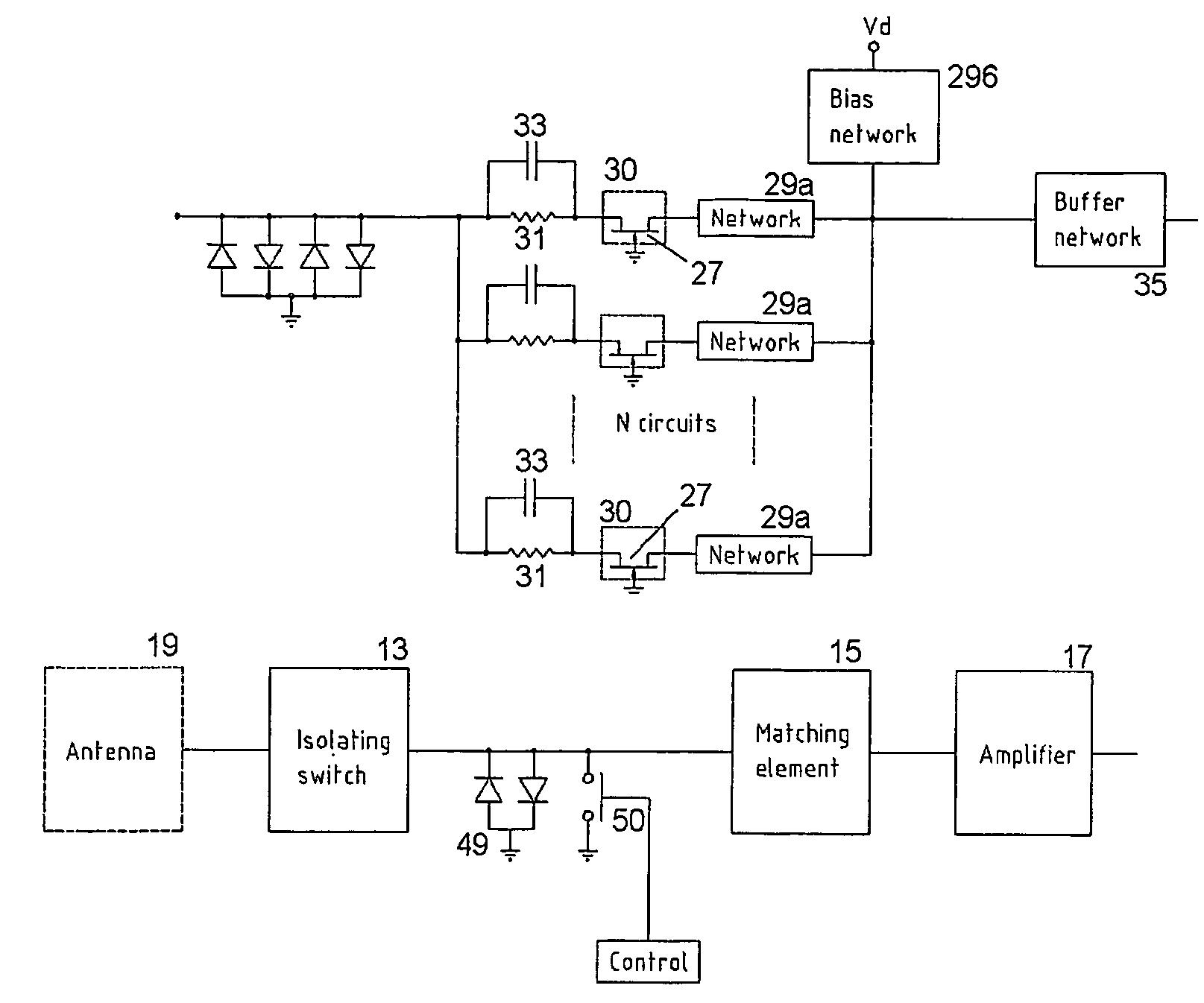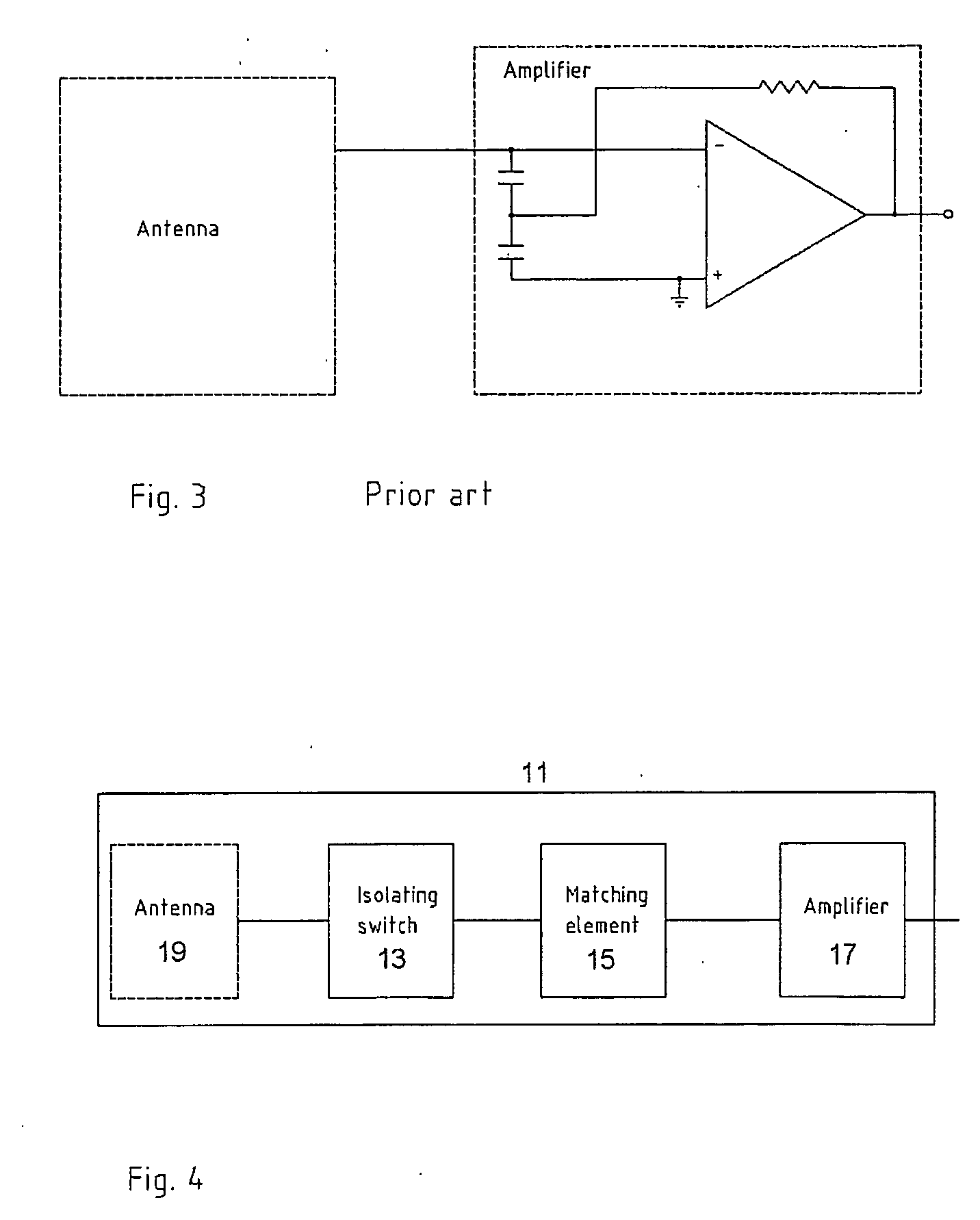Receive system for high q antennas in nqr and a method of detecting substances
receiver technology, applied in the field of nuclear quadrupole resonance (nqr) spectroscopic devices, can solve the problems of significant dead-time between the application pulse and the commencement of the receive period, resistive losses within the circuit and to the environment, and several deficits of employing a high q antenna. achieve the effect of rapid removal of energy and improving the phase stability of the response signal
- Summary
- Abstract
- Description
- Claims
- Application Information
AI Technical Summary
Benefits of technology
Problems solved by technology
Method used
Image
Examples
first embodiment
[0107] The best mode for carrying out the invention will now be described with respect to several embodiments. In accordance with the first embodiment, the isolating switch 13 comprises a low loss RF transformer controlled by a control circuit, the matching section 15 comprises a plurality of grounded gate JFETs (junction field effect transistors) connected in parallel, and the amplifier 17 comprises a high input impedance amplifier.
[0108] The arrangement of the isolating switch is as shown in FIG. 5, wherein a low loss RF transformer 21 with primary and secondary coils wound on a low-loss, high permeability material is provided. The primary side 21a of the transformer forms the series circuit to the signal receiving system 11 and the secondary side 21b is either opened or closed circuit to actuate a change in reactance and hence impedance, by virtue of a control circuit 23 and switch 25.
[0109] The isolating switch 13 does not conduct significant currents in its open state and is a...
second embodiment
[0116] An example of the second embodiment is shown in FIG. 7, where the isolating switch 13 uses a quarter wave line 41 in place of the transformer 21, having an end 43 that is made a node or anti-node via opening or closing a conducting element 46. In this example, the ¼ wave line end 43 is terminated by back-to-back signal diodes 47, which automatically open and close depending on the level of the transmit signal sensed by the control 23.
[0117] The third embodiment is substantially identical to the first or second embodiments, except that the amplifier 17 is replaced by a feedback amplifier whose intention is to lower its input impedance without introducing noise from a resistive feedback circuit element, as shown in FIG. 8. The network box 60 could be a resistor, capacitor or a series of circuits which create a feedback amplifier.
[0118] The fourth embodiment is substantially identical to the first or second embodiments, except that in this embodiment the matched section 15 is c...
PUM
 Login to View More
Login to View More Abstract
Description
Claims
Application Information
 Login to View More
Login to View More - R&D
- Intellectual Property
- Life Sciences
- Materials
- Tech Scout
- Unparalleled Data Quality
- Higher Quality Content
- 60% Fewer Hallucinations
Browse by: Latest US Patents, China's latest patents, Technical Efficacy Thesaurus, Application Domain, Technology Topic, Popular Technical Reports.
© 2025 PatSnap. All rights reserved.Legal|Privacy policy|Modern Slavery Act Transparency Statement|Sitemap|About US| Contact US: help@patsnap.com



